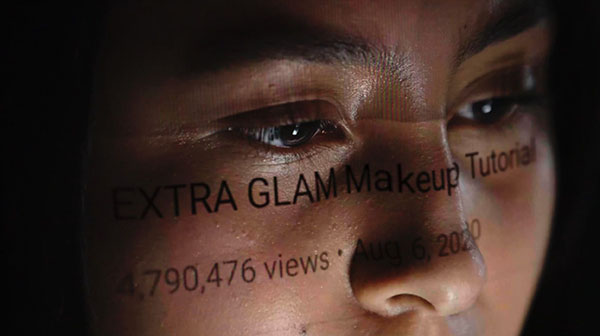The YouTube Effect is a searing, incisively edited look at one of the biggest websites of all time, chronicling why we should love and especially fear it.
The YouTube Effect was directed by Alex Winter, whose directing work I first became acquainted with … his two live-action Ben 10 movies. Don’t act like some of you my age aren’t in the same boat. He’s assembled a documentary that takes us through the history of the video sharing website YouTube, with all the pros and especially cons that come with it. From its humble origins as the place where Charlie bit fingers to the ultra-powerful media outlet it is now, we’re shown how the website has changed the world for better and for worse, how it operates, and what maybe needs to be done with the corporate and political policies that allow its many issues to fester and grow.
I still have somewhat vivid memories of when YouTube initially launched. I was ten years old and suddenly had a whole slew of new, silly content that, under strict provisions set by my parents, I was allowed to explore. Over time, I slowly sifted through more and more of the platform as it got bigger, and now, viewing it is a fully standardized part of my day. I’ve also seen it radically evolve into something far bigger and even more important than my childhood self could have ever anticipated.
One of the biggest praises I can give The YouTube Effect is how well it captures that rapid transformation. The footage used to represent the essence of each facet of the website’s life is almost as perfectly picked as I could imagine. You get the entire spectrum of material as if you’re actually browsing YouTube itself in each year of its existence. All of these clips are edited together in ways that either smoothly transition us through time, cleverly sort out each major category and its evolution, or juxtapose drastically different outlooks from YouTube’s users, onlookers, and higher-ups alike.

As YouTube grew, so too did its place in media and even politics. Which means The YouTube Effect, as you would expect, gets more serious as it goes along and ventures into the increasingly dark territory of which YouTube is at the center. YouTube is, putting it simply, a huge social media site. And like most such sites, it uses algorithms to deliberately draw its users down rabbit holes that keep their engagement and emotions running high. Even if those rabbit holes are dangerous and destructive. A lot of us already know this, but seeing the documentary portray it with all the needed context and history makes it crystal clear to anyone watching how we got to where we are now. Even those totally uneducated with the subject can have the pieces snap into place. Smaller touches like drawings of YouTube’s web layout that transition to the real deal (like you’re seeing an x-ray of its design) also add a lot with relatively little.
The YouTube Effect then takes its analysis even farther by going in-depth on the corporate side of the many debacles in question. Google and YouTube are kind of put on blast in the last third, as the documentary highlights that, like it or not, they’ve entered something that is irreversibly intwined with social and political consequences. The need for fixes and safety measures on YouTube is, as is very well put by the film itself, similar to the need for seat belts in cars. But even then, it’s made clear that there is no easy fix, and that the situation is far murkier than something more immediate and understandable.
Sadly, that last third is also where The YouTube Effect feels the most redundant and drawn out. A lot of the substance here consists of examples to support points that have already been covered. It’s basically the same story with different characters. YouTube itself is also focused on less here in lieu of broader media problems, although a part of me thinks this is fine, as it illustrates how entrenched modern YouTube is with media as a whole. The other part of me thinks this all comes across as The YouTube Effect running out of new ground to cover.
The funny thing is, more subjects could have been tackled. The most glaring omission in the entire documentary is coverage of YouTube’s notorious mishandling of copyright claims. Video takedowns by companies falsely claiming copyright infringement have been running rampant since the 2010s, but this phenomenon goes almost completely unmentioned. I was also surprised by how few actual YouTubers were present for interviews. Still, having Anthony Padilla of Smosh be one of the most prominent and frequent interviewees in the documentary is a surprisingly smart move, because he serves as one of the breakouts of early YouTube while also having gone through changes and taking on the more self-important work that reflects what YouTube has become.
It would have also been nice to touch a bit more upon how the heavy radicalization of YouTube users has spread to the entertainment sphere. We get a decent amount of time spent on the infamous GamerGate debacle, but that’s about it. I may be biased considering this is closest to my own interests, but it’s still noticeable. While on the subject of games, video game developer Brianna Wu stands out as the most emotionally resonant interviewee, particularly when she discusses her experience with GamerGate. Former YouTube CEO Susan Wojcicki, on the other hand, is someone I’m convinced was invited to be secretly made fun of with how contradictory her statements are to the rest of the documentary’s points and evidence.
While its first half is far tighter and more flowing than its second half, and a few areas go a bit underexplored, The YouTube Effect is a great summary of where YouTube came from and why we should both celebrate and be afraid of where it is now. It never feels like it pulls any punches with how serious it gets, to a point where I finished it a little emotionally exhausted. That’s a compliment, make no mistake, but don’t expect a happy-go-lucky documentary here. If this whole movie was uploaded to YouTube itself, I’d give it an easy thumbs-up.
The YouTube Effect will be released in Alamo Drafthouse Cinemas on July 7, before expanding nationwide in the US on July 14, 2023.

